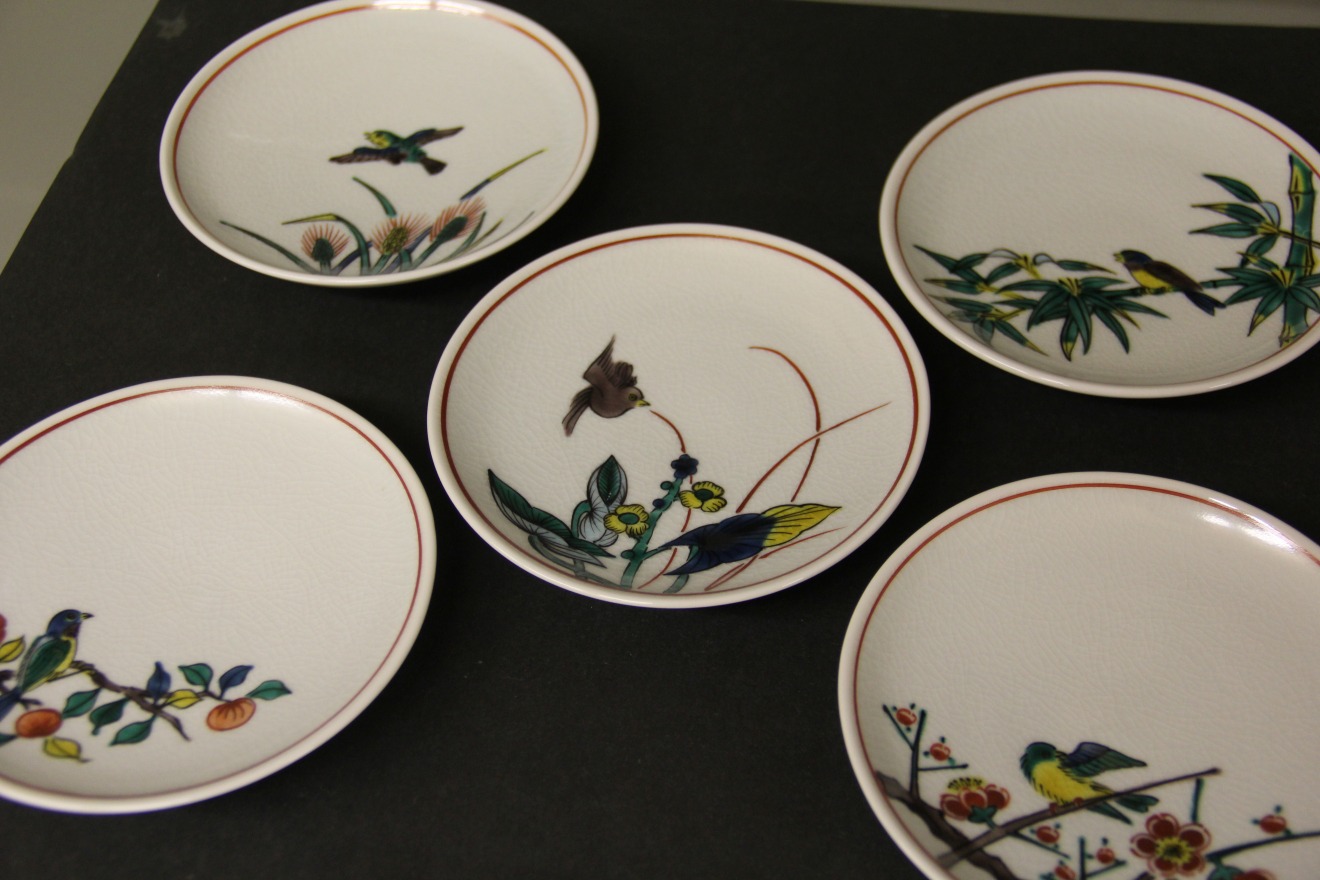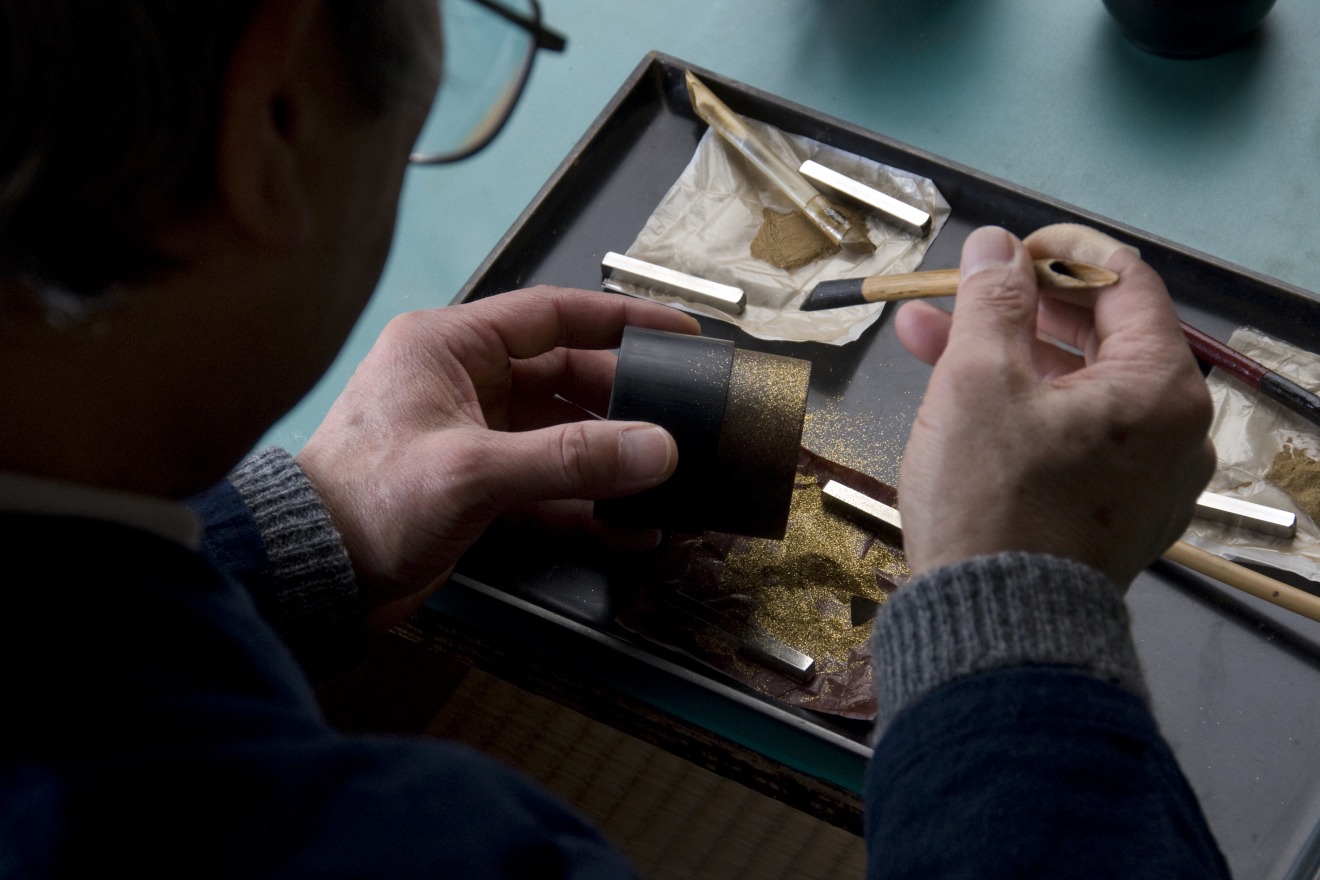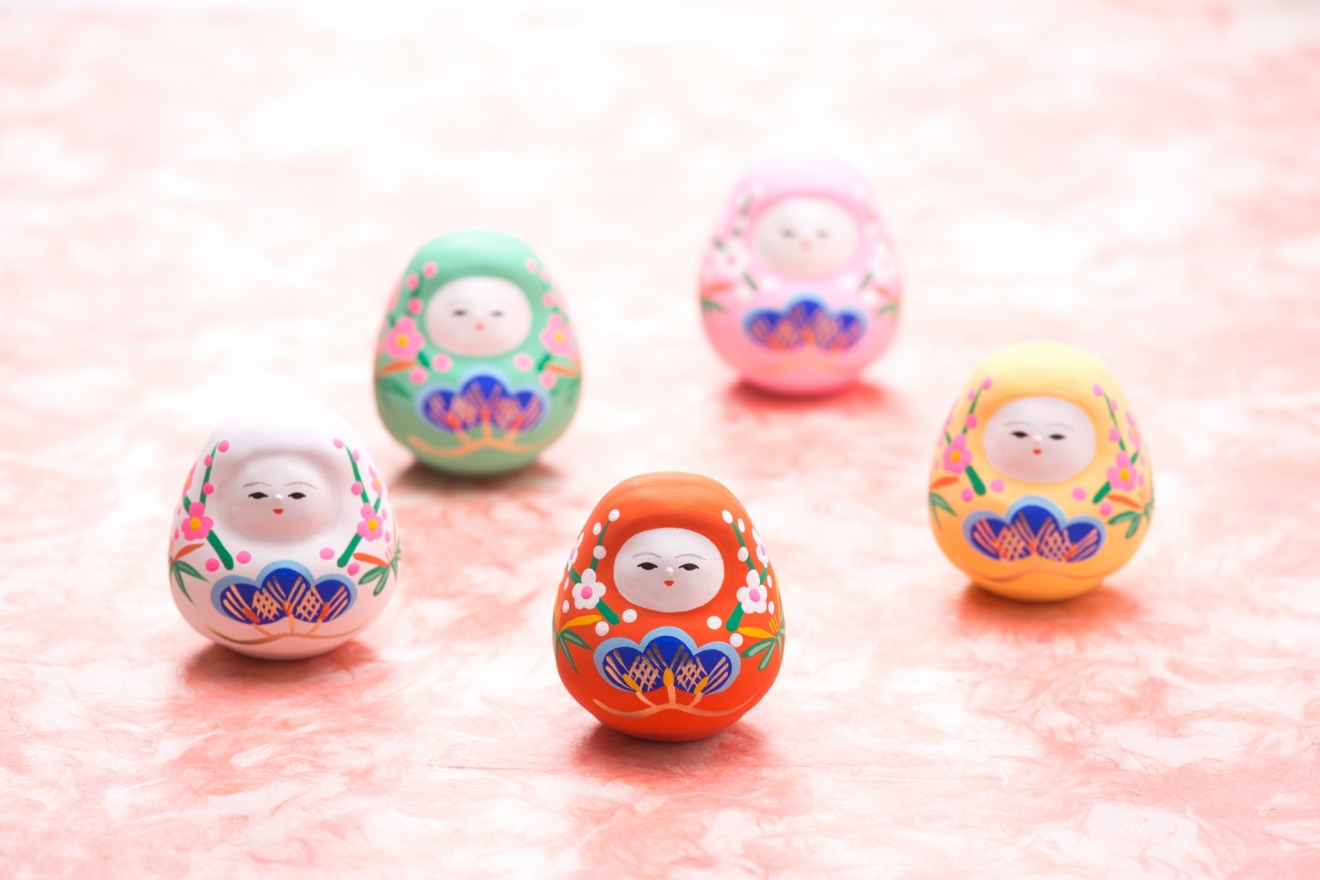The Epicenter of Traditional Japanese Crafts
From the time Maeda clan Lords gathered the finest craftsmen from around Japan to his domain in the 17th century, Kanazawa has thrived as a center for traditional Japanese crafts. This reputation for fostering the arts and crafts has been recognized by UNESCO, which designated Kanazawa as a city of Crafts and Folk Art in its Creative Cities Network in 2009 and eventually led to the relocation of the National Crafts Museum from Tokyo to Kanazawa in 2020.
Kanazawa is now known as the city of “Kogei” (crafts). Art lovers visiting Kanazawa can appreciate its dozens of traditional art forms in shops, galleries, and museums and experience many of them in hands-on workshops led by master artisans. Elegant gold leaf and lacquering, brilliant dyeing and embroidery techniques, and masterful pottery are only a few traditional crafts still created by hand in Kanazawa, as they have been for centuries. Kanazawa represents the best of Japanese craft makers, all collected in one incredible city.

Kanazawa Gold Leaf
Inherited traditions of Kanazawa
A gold leaf is made by beating gold into an extremely thin sheet with a thickness of 0.1 to 0.125 millionths of a meter. It is so thin that it will disappear when you rub it with your fingers. The production of gold leaf started in Kanazawa at the end of the 16th century.
The Maeda family, who ruled the Kaga Clan (the present Ishikawa and Toyama areas) in feudal times, invited many artisans to Kanazawa. The Shogunate in Edo (present Tokyo), however, allowed gold beating in limited areas, such as Edo and Kyoto. Therefore, it is around the second half of the 19th century when the production of gold leaf was revived publicly in Kanazawa.
A rolling mill is used to thin gold mixed with a little silver and copper. The thinned gold sheet is sandwiched with special paper and beaten with a machine repeatedly to a thickness of around 2/10,000 mm. Presently, Kanazawa produces 99% of domestic gold leaf and 100% of domestic silver leaf and platinum leaf. These products generically called "Kanazawa haku" are Japan's designated traditional handicrafts.
GOLD LEAF -A tiny world contained within 1/10,000 millimeters-
Kaga yuzen dyeing
The art of delicate dyes
Yuzen refers to a traditional technique of dyeing silk fabrics for kimonos or products made with the technique. Kyo Yuzen and Kaga Yuzen are famous. Miyazaki Yuzensai established the fundamental technique of yuzen at the beginning of the 18th century.
Kaga Yuzen is characterized by designs of realistic natural beauties in five vivid tones called "Kaga gosai" (literary means Kaga five colors), and it frequently uses gradation dyeing called "bokashi." A roll of yuzen is completed through complicated processes, such as pattern transfer, paste coating, coloring, steaming, and rinsing. Kaga Yuzen with splendid, fine, beautiful patterns is known as a luxury brand. There are stores where you can see the work process of Kaga Yuzen, experience dyeing, or try on a kimono, in the city.
KAGA YUZEN
Kaga-nui embroidery
Embroidery made with the utmost care
The technique of Kaga-nui embroidery was developed in Kanazawa while it was applied to the battle jacket of the Maeda family, the lords of the Kaga Clan, and the family's kimono for women. Kaga-nui embroidery is characterized by three-dimensional designs of natural beauties using sink, gold, and silver threads elaborately. The embroidery every stitch tucked up carefully with a unique and delicate technique creates an elegant atmosphere. Presently, embroidered products, such as Western-style cloth bags, neckties, and cushions, besides kimonos are manufactured.
Kutani ware ceramic
Ceramic that represents Kanazawa
Kanazawa's modern Kutani ware cermic is based on a revival of Kutani ware ceramic early in the 19th century. Originally, Kutani ware ceramic was baked in Kutani Village in the southern part of Ishikawa Prefecture for several decades from the middle of the 17th century.
Later, Kutani ware ceramic leaped to fame when it was exhibited at the 1873 World Exposition. Kutani ware ceramic has been once exported to the West. Kutani ware ceramic is characterized by the technique of thickly heaping up paint in five colors, i.e., red, yellow, green, purple, and dark blue and drawing natural beauties boldly.
It developed as typical Japanese colorful ceramic ware. In recent years, not only traditional Kutani ware ceramic vessels and ornaments but also coffee cups and wineglasses with beautiful Kutani ware ceramic stems have been manufactured.
Ohi ware
Ware that inherited over 350 years
Ohi Chozaemon introduced Ohi ware in 1666. He accompanied the Urasenke Grand Tea Master when the Maeda family, who ruled the Kaga Clan (the present Ishikawa and Toyama areas) in feudal times, invited the Grand Tea Master to Kaga. Chozaemon remained in Kanazawa and worked for the Maeda family. Ohi ware is lightweight ceramic ware shaped by hand and with a spatula and baked at a comparatively low temperature. The simple but beautiful shape with amber glaze and a gentle touch of the ware are highly evaluated.
Kanazawa shikki lacquerware
Techniques of gorgeous Maki-e
Shikki is called "japan" in English. As its name suggests, shikki is a typical handicraft of Japan. Japanese lacquer is repeatedly applied to processed hard wood, such as cypress and zelkova wood, to complete shikki.
The Maeda family, who ruled the Kaga Clan (the present Ishikawa and Toyama areas) in feudal times, invited a master artisan early in the 17th century. This master artisan introduced Kanazawa Shikki. Japanese lacquer has an adhesion function. Therefore, a picture or pattern is drawn on the surface with gold powder, silver powder, and seashells put onto the surface. Kanazawa Shikki, which has splendid decoration, has been developed as furniture and artistic handicraft articles for the lord.
Besides, although shikki is weak to direct rays or dryness, it resists water and heat, and its gloss deepens while it is in use.
KAGA MAKIE -Sparkling gold lacquerware-
Kaga zogan inlay
Works that are called superior masterpieces
Zogan (incrustation in English) is a technique of carving a base metal and inlaying other metals. Kaga Zogan originates from a metal artisan who was invited by the Maeda family in order to develop a production technology of swords and arms. The base metal is engraved with designs, such as a family crest, and other metals that are different in color, such as gold and silver, are struck and inlayed into the base metal. With a skillful technique, a beautiful pattern and fine lines with a thickness of a few millimeters are made. Presently, Kaga Zogan pendants and accessories are made besides vessels and ornaments.
Kaga Zogan -Mastering the Beauty of Metal-
Kaga mizuhiki
Delicate ornaments adorned with strings
Japanese people have a custom of decorate gifts with strings called mizuhiki. Mizuhiki is a special string made by twisting a long and thin sheet of paper mixed with seaweed and white clay and hardened with paste. Kaga mizuhiki uses gold leaf and silver leaf abundantly, and it is knitted skillfully into shapes of pine, bamboo, and plum trees, cranes, or tortoises that are considered as bringers of good luck. Kaga mizuhiki is indispensable to auspicious occasions, such as ceremonial exchanges of betrothal gifts.
Kanazawa wagasa umbrella
Umbrellas made by bomboo and Washi
A wagasa is a Japanese traditional umbrella consisting of washi (Japanese paper) with a bamboo handle and ribs. Japanese traditional umbrellas are still indispensable to the tea ceremony and Japanese dance though Western-style umbrellas have replaced them in Japanese people's daily lives. By taking into consideration the climate of Kanazawa, where it rains or snows a lot, the Kanazawa wagasa is of strong structure with four sheets of Japanese paper pasted to the central part of the umbrella. Furthermore, the Kanazawa wagasa is characterized by its splendid and graceful color and design.
Futamata's Japanese paper
Paper carefully handmade by artisans
Futamata is located in the mountains of Kanazawa, where the production of Japanese paper started 400 years ago mainly for the Kaga Clan under the protection of the Maeda family, who ruled the Kaga Clan (the present Ishikawa and Toyama areas) in feudal times. Manufacturers spend a long time boiling, manually filtering, and drying outer barks of trees called kozo, mitsumata, and gampi to make Futamata's Japanese paper. Japanese paper is often used in everyday scenes in Japan. Besides, Japanese paper is used for artistic handicraft articles and uchigami (in the beating of gold leaf).
Paulownia handicrafts
Handicrafts decorated with lacquerware ornaments
The kirihibachi, a traditional Japanese hand/room warmer made of paulownia (also called princess tree), was nationally famous before the heating instrument using oil or electricity appeared. The main reasons were that it was easy to obtain the material in those days and that a lacquer work technique used for the kirihibachi attracted people. Presently, paulownia vases, cake trays, and small drawers are manufactured with splendid lacquer work performed while making use of the grain of the paulownia.
Local toys
Adorable ornaments that are lucky charms
People in Kanazawa have been familiar with traditional local toys as bringers of good luck. Kanazawa's traditional toys are characterized by simplicity but refined beauty. These toys include Kaga dolls, such as a lion head and traditional Kaga Tobi firefighter doing acrobatic performance, hachiman okiagari koboshi (tumbler doll), and komekui nezumi (rice eating mouse).
Kaga fishing flies
Feather jigs overflowing with beauty and elegance
The Maeda family, who ruled the Kaga Clan (the present Ishikawa and Toyama areas) in feudal times, promoted river fishing for the physical training of samurais (members of a feudal powerful military class). Then fishing flies were made with minute feathers that looked like insects flying above the surface of the river. Presently, accessories and pendants are produced by utilizing the delicate manufacturing technique of fishing flies.










































